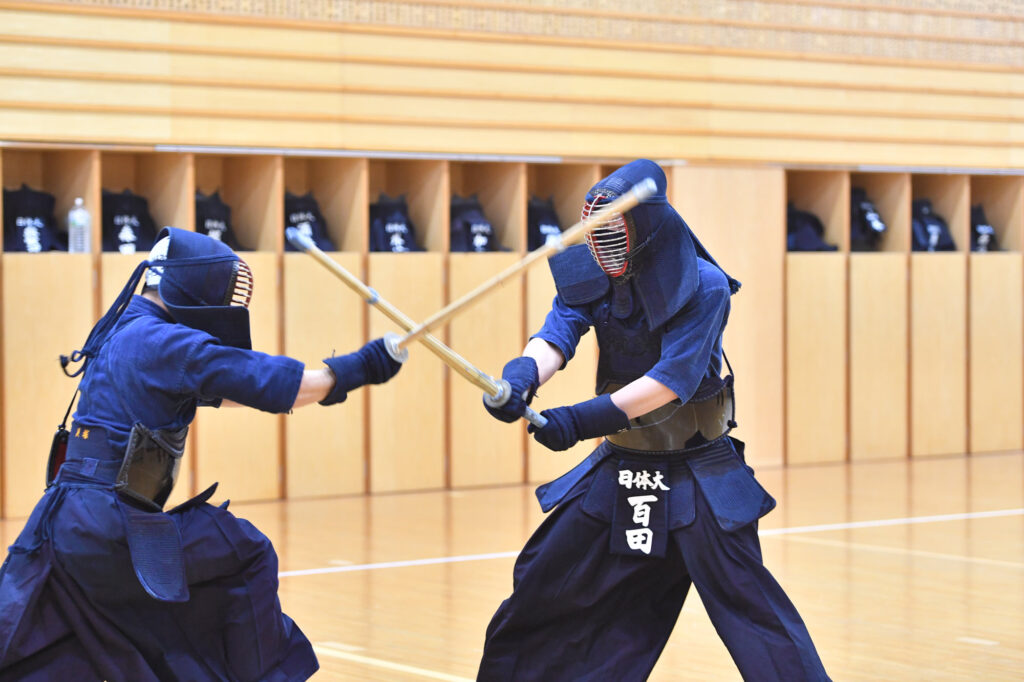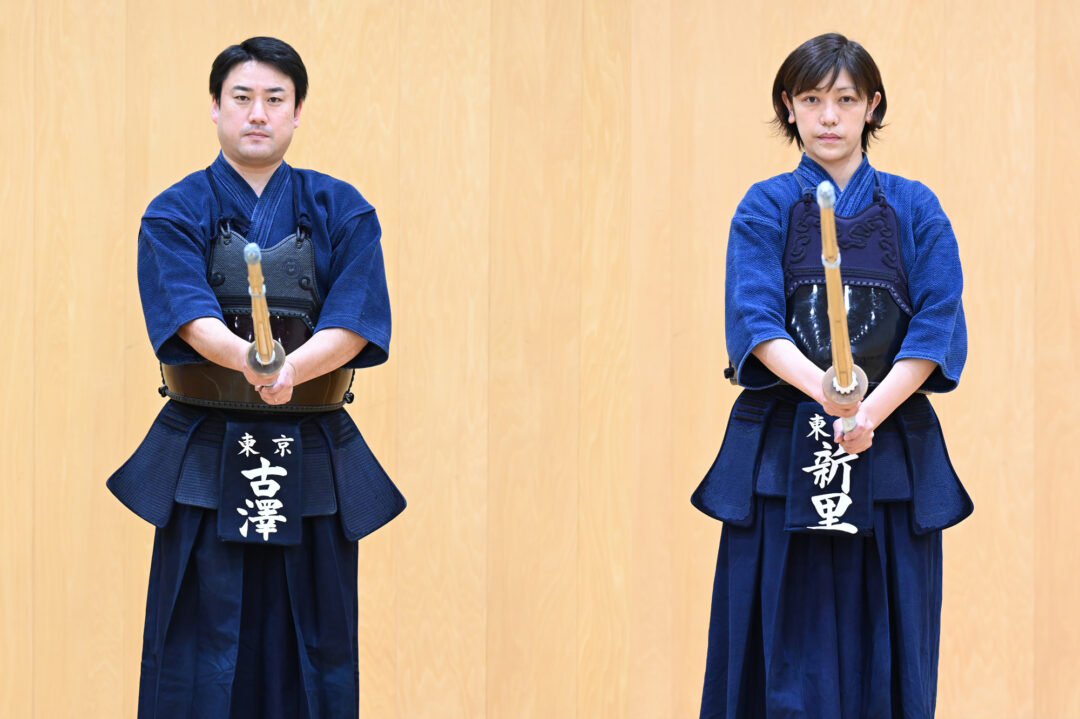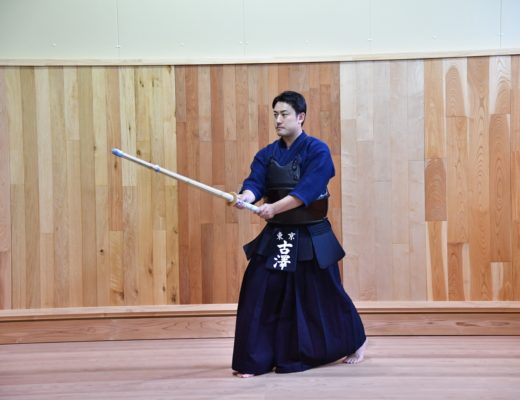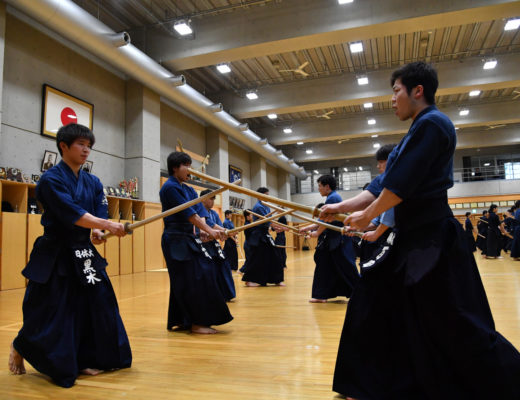2021.6 KENDOJIDAI
Photo: Nishiguchi Kunihiko
Translation: Jouke van der Woude
What kind of Keiko is done by the students and future Kendo instructors at the Nihon University of Health and Sport Sciences? Kirikaeshi, Uchikomi, Kakarigeiko. Men’s coach Furusawa Nobuaki, and women’s coach Shinzato Chikano, introduce the key points to maintain a sense of immersive tension at all times.
Editor’s note: The contents in this article were compiled by the editors based on interviews with the two coaches.
Furusawa Nobuaki, 7th Dan
Born in Kumamoto Prefecture in 1981. After graduation, he joined the Imperial Guard, and took 3rd place in the National Police Championship. After retiring from the Imperial Guard, he studied at the graduate school of the Nippon Sport Science University, and is currently an associate professor at the Department of Martial Arts, Faculty of Sport Science. He is also the director and men’s coach of the university’s Kendo Club.
Shinzato Chikano, 7th Dan
Born in Okinawa Prefecture in 1982. After graduating from Kōnan Junior & Senior High School, she enrolled at the Nippon Sport Science University and went on to their graduate school while continuing to work as an assistant at the Kendo Research Facility. At the same time as entering graduate school, she worked for the Niigata Prefectural Sports Association. She placed 2nd in the All Japan Women’s Kendo Championship, 3rd in the World Kendo Championship, and 2nd in the National Teachers’ Kendo Championship. Currently, she is an associate professor at the Department of Martial Arts, Faculty of Sport Science, Nippon Sport Science University, and she is the women’s coach at their Kendo Club.

In Kendo, there is almost no difference in the content of training from beginners to experts, including Suburi, Kirikaeshi, Uchikomi, Kakarigeiko, Gokakugeiko (Jigeiko with peers), and Shidogeiko (Instructional Jigeiko with Sensei or Senpai). Then, when we think about what can make a difference, it is important to instruct them while simulating a competitive setting as closely as possible. At the same time, it is important to thoroughly pursue the quality of the Keiko content. We believe that it is the role of the instructor to create such a training environment and awareness of it.
The basic premise of the Keiko at our university is to acquire the principles and techniques needed to become a Kendo instructor. In order to become an instructor, one must understand and be able to demonstrate all of the techniques presented by the All Japan Kendo Federation. It is only when you acquire both the theory and the practical skills that you can teach.
However, even if Kendo is understood with the mind, it can be difficult to implement. This is what gives Kendo depth, so it is important to do plenty of Keiko and learn to use techniques in the spur of the moment.
At our university, there are 81 men and 31 women engaging in Keiko. The advantage of being able to do Keiko with all the members of the club is that the students with excellent skills carry all other students, and the group improves as a whole. By doing Keiko in the same environment, we can observe, learn, and cross swords, and naturally develop our Kendo skills. To that end, instructors must manage and ensure that a sense of immersive tension is maintained from the beginning to the end of Keiko, always with the awareness of a competitive scenario.
Due to COVID-19, we were hardly able to do Keiko last year. We resumed our activities this March, and the students are enthusiastic, perhaps as a result of having not been able to do Keiko for such a long time.
The four years of university life are an important time to decide the future of one’s life. As an instructor, you must be a good Motodachi, so you must learn not only how to create openings, how to allow for strikes, and how to receive Taiatari, but also how to lead a Kakarite and make them run out of breath.
This is why our university places so much emphasis on Kakarigeiko, and it is through repeated Kakarigeiko that the Kakarite, using the entire body, can acquire the strength necessary for Kendo.
What is important in Kakarigeiko is not to let yourself get disturbed both physically and mentally. If you do, you will not be able to perform accurate techniques. By repeating to perform techniques without getting disturbed in tough Keiko, you will be able to be patient when you get into the Maai of striking in competitive settings, and you will be able to strike without hesitation. Such patience will lead to the discovery of new opportunities and choosing the right and sharp techniques.
The Kendo Club works with the university’s training support team to provide core training and stretching for injury prevention. The students’ Keiko is very strenuous and there is always a risk of injury. If a student gets injured, he or she has no choice but to stop Keiko, and if he or she resumes without fully recovering, he or she may fall into a vicious cycle of further injury.
We consider injury prevention to be an important issue in order to enable the continuation of fulfilling Keiko.
Standing Mokuso, silence before the storm
The rest of this article is only available for Kendo Jidai International subscribers!




